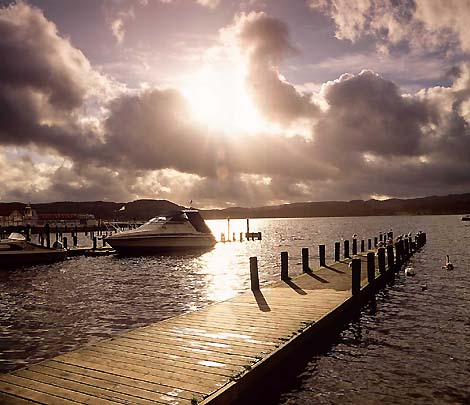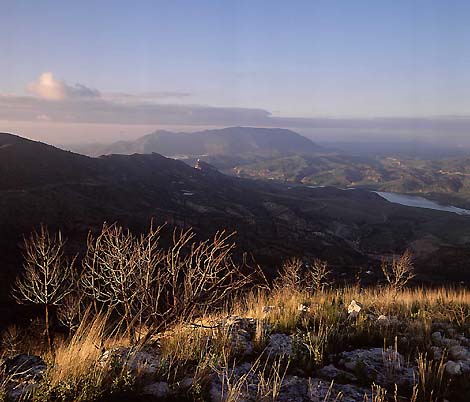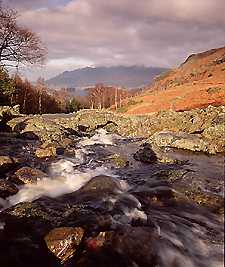
I faced this dilemma a few years ago. With a growing collection of 35mm colour transparencies lodged with a leading picture library, I began to see the logic in stepping up a format. After all, if I was going to invest money in stock-gathering trips, I might as well return with pictures that offered the greatest possible earning potential. My picture library was equally enthusiastic when I broached the subject, so the search began for suitable system.
From the onset, 6x7cm seems liked a good compromise. The image size is five times bigger than 35mm, so it offers immediate impact and much superior image quality, I've always liked working with the rectangular format, and the 6 x 7cm proportions fit nicely onto a 10 x 8" sheet of printing paper, or an A4 cover.
The problem was deciding which model to invest in. The Mamiya RB and RZ67 were both out due to their size, as was the lighter non-rotating back Bronica GS1. The Fuji GW670 scored highly in terms of size, weight and ease of use, but was let down by the fixed lens, as was the discontinued Plaubel Makina.
A quick count left me with just one model - the Pentax 6x7 - which, on closer inspection, seemed like the answer to all my prayers. Although it could never be described as light (almost 1800g for body and prism finder), in every other respect it fitted the bill.

The Pentax 6x7 SMC coated lenses can be used right into the light with minimal flare by rollfilm standards
No worries. The Pentax sits nicely in the hand, and with the moulded wooden grip it�s possible to handhold down to 1/60, even 1/30sec without camera-shake, whether using the camera horizontally or upright. The huge reflex mirror does make a hefty clunk when the shutter release it tripped, but if you're ready for it there isn't a problem.
The simple specification also makes the Pentax 6x7 easy to use, foolproof and reliable.
Its rollfilm is loaded just like a 35mm SLR, by feeding the backing paper leader across the film gate and slotting it into the receiver spool. Switching the empty spool across after each roll of film is finished can be tricky with cold hands, as is getting the lugs to accept the spools in each chamber. With only 10 shots on a roll of 120, film changing is a regular occurrence as you can't just clip on a ready-loaded back. That said, you soon get used to these things, and 220 film can be used if it is available in your preferred film stock.
I purchased a body with a non-metering prism finder, and take all exposure readings using either a Pentax Digital Spotmeter or Minolta Autometer III. It's then a simple case of setting the shutter speed on the body, the aperture on the lens, locking-up the mirror with the switch on the side of the lens mount (if the camera is tripod-mounted) and taking the picture. The mirror lock is a sought-after feature of later models, so if you buy secondhand, always look for an 'MU' body.

A tripod, mirror lock-up and hand held spot meter held greatly when the light is both low and difficult to meter
The flash sync speed is a long 1/30, unless you buy one of the two leaf shutter lenses available - 90mm and 165mm. You can't change film backs, but the body can be modified to take a Polaroid back. For landscape and travel photography, neither of these limitations has ever been a problem, and I have used the camera successfully for studio work, shooting portraits and packshots on a fairly regular basis. It�s a case of what you've never had, you never miss.
The only niggle I have is the quality of the viewfinder. The standard focusing screen presents a rather dark image which can make focusing tricky in low light, and the colour transmission is very 'cold'. A Beattie Intenscreen or a Pentax grid screen can brighten up the viewfinder. The cool image can be a benefit - I'm usually pleasantly surprised when I get a batch of trannies back from the lab because they always seem much brighter and warmer than I'd remembered!
Unlike the waist-level finder, the prism only reveals around 84 per cent of the frame, in the interests of keeping size and weight down. Unwanted elements, unseen through the viewfinder, can appear in the final shot. Most mounts and black masks show more than the Pentax's finder does, so unless you�re careful you can end up with untidy edge intrusions.
The only time this has been a real problem for me is when I first started using a Hitech 100mm filter system with the Pentax, and wasn't aware that the 105mm Kasemann polariser that screws on the front of this was causing vignetting with the 55mm wide-angle - until I got the processed film back from the lab. In the end I had to mount those trannies in 6 x 6cm black card masks to hide the darkened corners.
Even I�m surprised by this - you'd struggle to get more than a Mamiya RB67 with standard lens in the same area - but it makes for easy carrying and hassle-free storage as hand luggage on overseas flights. The total weight exceeds the maximum allowance, but who would realise that looking at such a small bag?

Ashness Bridge in the Lake District - one of the slides from Lee's picture library
The simplicity of the camera means you don't have to wrap it in cotton wool. I've taken pictures in driving rain, heavy snow, hail, howling gales, sea spray and dusty or sandy locations without ever suffering the consequences - dust and sand are easily brushed away, while moisture is wiped off with a chamois leather. It has also had its fair share of knocks and bumps, but the only evidence of this are a few scuffs on the paintwork.
For photographers who prefer simple, fuss-free cameras it's perfect - nothing can wrong except a flat battery.
Imagine your 35mm SLR has just increased in size several times and you�ll get a pretty good idea of what it's like. I certainly won�t be parting with mine in a hurry - even if the new Mamiya 7 looks incredibly tempting.